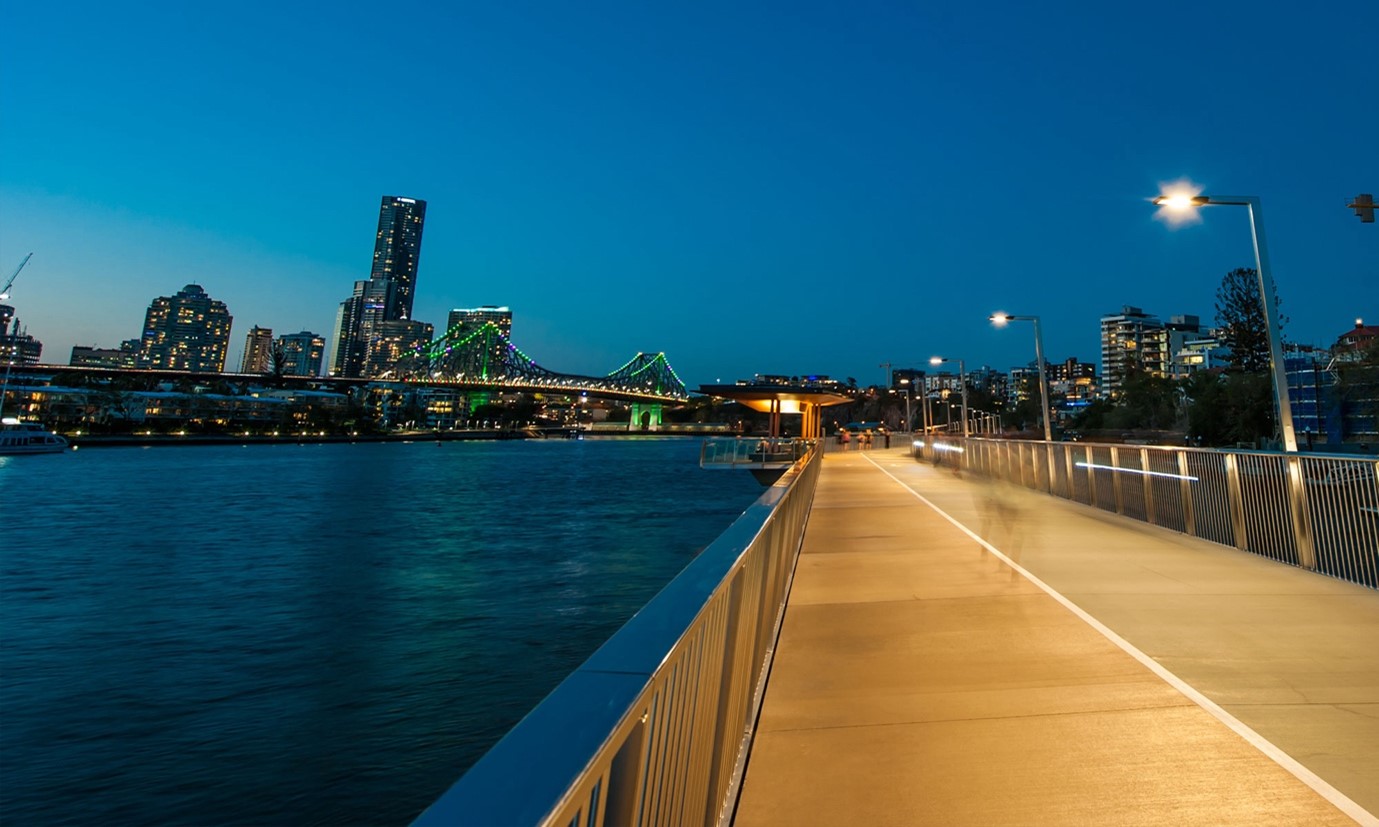YIMBY: Active Transport in Brisbane
YIMBY QLD supports increased provision of cycling infrastructure. Providing commuter, recreational and localized active transport links can contribute to social engagement, physical activity and replace vehicular journeys.
Benefits
Active transport modes, including walking and cycling, are the most sustainable form of transport, contributing to environmental sustainability, placemaking, healthy living and producing economic benefits.
- Environmental: Transport contributes 18% of Australia’s carbon emissions – a modal shift towards active travel is a vital component in reducing transport emissions.

- Economic: While often going under the radar, active travel generates significant economic benefit, including increased activity for local businesses and lower travel costs. A study produced by Transport for NSW found that walking and cycling derived economic benefits of $6.52 and $2.25 respectively, per kilometre in urban areas.
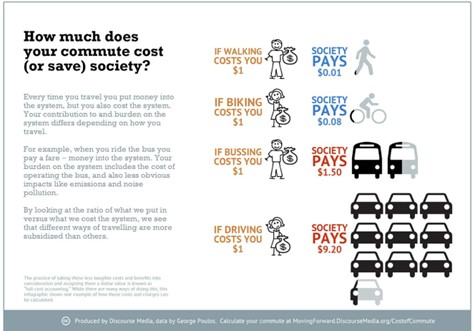
- Congestion Busting: When well-integrated and implemented, active transport infrastructure can serve as an approach to reducing traffic congestion and replacing vehicular journeys. Cycling is a spatially efficient mode of transport, accommodating up to seven times the hourly capacity of a general traffic lane.

- Health: Active travel has obvious health benefits as a form of physical activity, which has considerable downstream benefits in reducing the strain on the health system.
- Place and Community: Active transport and walkable neighbourhoods can foster greater social activity and community belonging.
Contention
Despite the multiplicity of benefits derived from use and investment in active transport, it comprises a negligible modal share in Brisbane. Australia’s sporty and outdoorsy culture would seemingly lend itself to active travel; its adoption has been hamstrung by an array of obstacles:
- Low-density urban form and minimal land-use mix.
- Hilly topography – as experienced in Brisbane. Albeit, with the popularization of e-bikes, this obstacle can be combatted.
- Insufficient infrastructure
- As vulnerable road users, segregated paths are preferrable on heavily trafficked roads. These are few and far between.
- Continuous paths, as opposed to patch lane markings, are conducive to active travel.
- Demographics
- Female ridership is a strong indicator of the quality and safety of active transport infrastructure. Female cyclists are characterized as comparably risk averse when it comes to commuting by bike, with fears of collision and aggressive behaviour from drivers a deterrent.
- An Ipsos study indicated that Australian attitudes toward active transport are considerably negative by global standards, with 1/5 motorists inciting road rage against cyclists.
- Australian motorists’ intolerance and perceived ownership of the road, coupled with insufficient infrastructure, has resulted in an increased number of crashes, of which 79% are the fault of drivers, according to a study from The University of Adelaide.
Brisbane Context
In a commendable move, Brisbane City Council is undertaking the delivery of four green bridges, three of which will provide cross-river connections. Plugging black holes in Brisbane’s transport network, the bridges will link a swathe of parks, public transport stations, health and educational precincts and employment centres. With an eye to the 2032 Games, the Queensland Government has envisaged a network of active travel corridors intertwining Brisbane’s inner-city precincts.
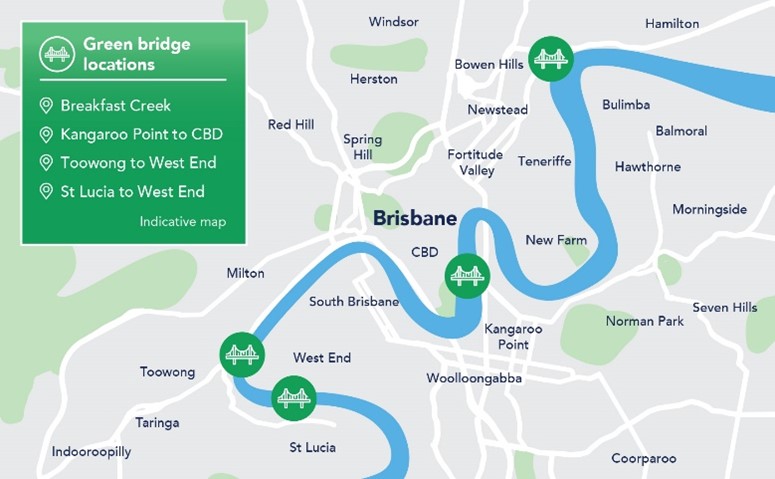

Thanks to the popularity of Brisbane’s existing cycleways (where of high quality and safety), significant strides have been made in the past decade for cycling infrastructure. The Woolloongabba Bikeway, spanning from South Brisbane to Woolloongabba and Dutton Park along Stanley St and Annerley Road, was constructed in 2019 to segregate active travel from general traffic following the death of a Danish tourist. The route utilizes the Eleanor Schonnell Bridge to interconnect UQ, Mater Hill and Woolloongabba – perhaps providing a model for integrating future green bridges into inner-city precincts.
In the COVID-induced lull between 2021-2022, where CBD activity and visitation was dwindling, Brisbane City Council conducted a trial for dedicated cycleways on a number of CBD streets, including: Elizabeth, William and Edward Streets. Conveniently, each of these routes provides connections to future green bridges, these being the new Kangaroo Point Bridge and the repurposed Victoria Bridge. Community engagement conducted on the project uncovered strong support for the routes and suggested that pedestrians, cyclists and motorists felt safer as a result, with data further indicating increased cycle and micro-mobility ridership (Brisbane City Council, 2022). Subsequently, Council have committed to retaining, futureproofing and expanding the network.

Whilst recent initiatives have been a step in the right direction, a lot more must be done to catalyse a mode shift towards active transport.
Community sentiment in some neighbourhoods continues to present a significant hurdle to overcome. As earlier referenced, perceived ownership of the road and aggression from motorists, coupled with an obsession for on-street car parking has stymied several projects. The North Brisbane Bikeway through Clayfield and Dornoch Terrace safety improvements in Highgate Hill drew the ire of locals. Despite 16 crashes between 2014 and 2018 and calls from the RACQ to implement safety improvements, the Dornoch Terrace proposal was ultimately thrown out by Council, who committed to “listening to feedback and retaining on-road parking”.
Future
How can active transport become a genuine option in Brisbane?
Brisbane’s recent successes in generating increased ridership through active travel investments suggests that: “Build it and they will come”.
Whilst Brisbane’s roll-out has been gradual, Melbourne serves as a recent best practice example of expansive active travel investment, planning to install 40km of cycleways across the city. With over 19km already built, bicycle ridership has jumped by 22% (City of Melbourne, n.d.). A marked mode shift towards active travel can potentially indicate greater accessibility for less proficient or more casual riders, who would’ve previously felt uncomfortable and unsafe.

For Brisbane to implement a cycle network, such as the ‘active travel corridors’ envisaged for the 2032 Games and interconnect precincts – as well as benefit suburban areas – a range of principles and ideas can be considered:
- Cycling for ‘All Ages and Abilities’
Designing for All Ages and Abilities is considered an international best practice for urban bikeway design, utilising traffic calming and separation of road users to establish cycling as a safe and equitable option. This principle considers a broad spectrum of users, beyond simply dedicated riders and young, active cyclists, to consider perspectives of gender, socio-economic status, and those hauling goods.

Five typologies of bikeways are suggested in the guidelines, catering for different contexts and demands:
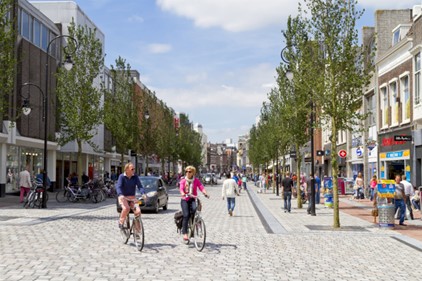
Low- Speed Shared Streets
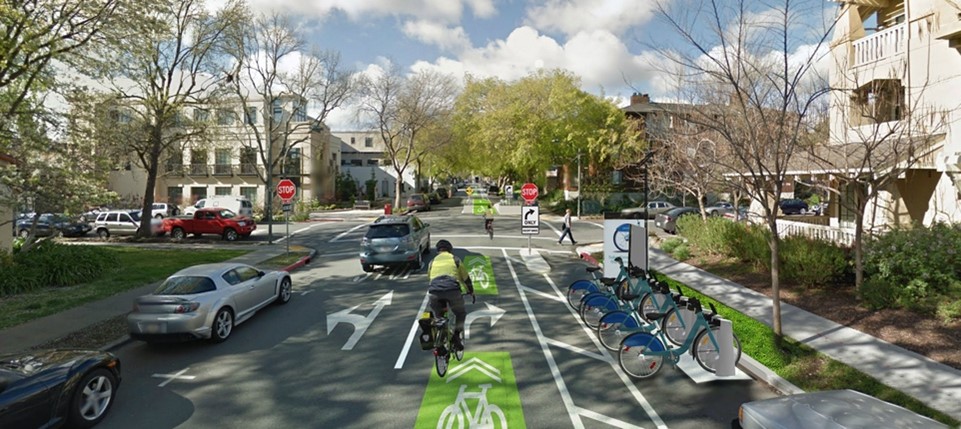
Bicycle Boulevards
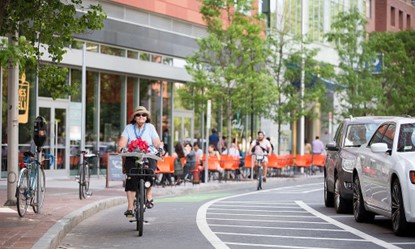
Buffered & Conventional Bicycle Lanes
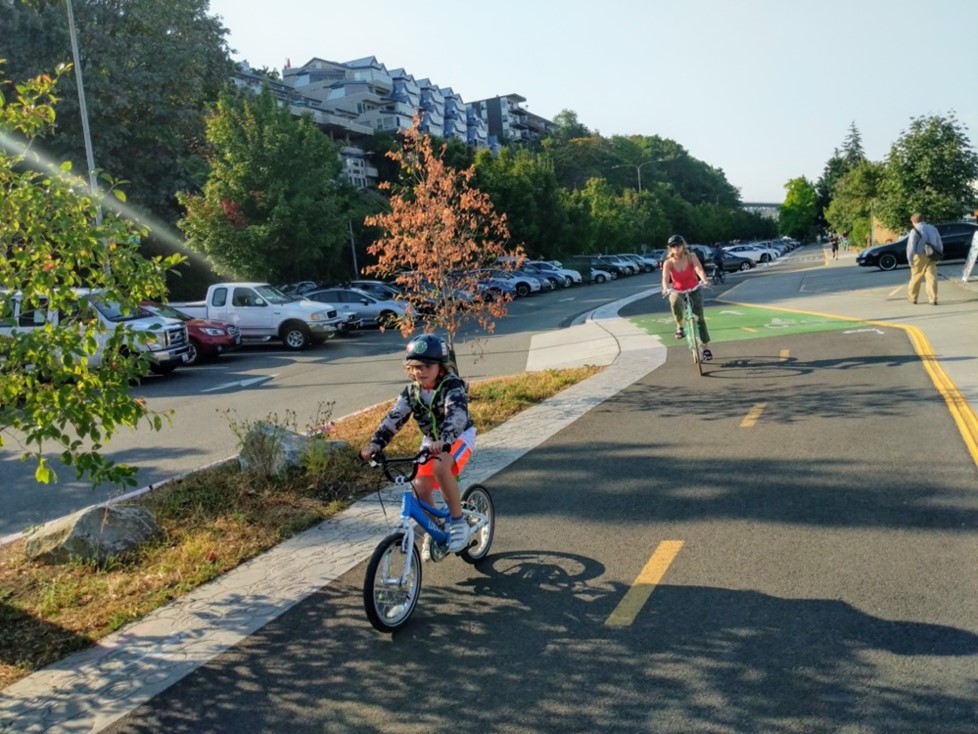
Protected Bicycle Lanes
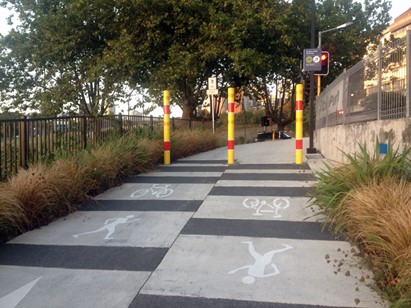
Shared-Use & Bicycle Path
2. 15 Minute Neighbourhoods
Amidst the conjecture and delusion regarding 15-minute neighbourhoods, creating walkable and cycle-able neighbourhoods can reduce the need for short vehicular trips in suburban areas. A Transport for NSW strategy suggests a range of measures, including reduced on-street parking, implementing low-speed zones, upgrading existing paths and streets, increased tree canopy and reallocating vehicle lanes to prioritise active travellers.

3. Active School Travel
Despite the countless complaints from parents that their kids “don’t go outside enough” or “don’t ride around on bikes like we did when we were kids”, cycling and walking to school has plummeted. Numerous Councils have launched initiatives to encourage kids to actively travel, ultimately little uptake will occur if kids and/or parents don’t feel safe. Drawing upon the Transport for NSW strategy, perhaps proposed initiatives, such as tree canopy, reduced speeds and traffic calming could be concentrated around schools.
4. First and Last Mile Journeys
Improved integration and interconnection between public and active travel modes can increase the flexibility and catchment of Brisbane’s transport network. Constructing active travel infrastructure within the vicinity of rail and bus stations and major transport corridors could facilitate car-free trips to and from suburban stations and perhaps reduce the need for/allocation of parking spaces at suburban park and rides. Could some space potentially be repurposed for compact bicycle parking spaces and more active land uses, such as housing? Journeys from CBD stations to adjoining precincts, which may not have a direct connection, become much more convenient and feasible, without needing to travel by car.


Brisbane’s current and proposed active transport infrastructure have significant potential, should they be integrated with existing networks and precincts. YIMBY QLD encourages State and Local Governments to be bold in their proposals for active transport and consider the immense benefits which can be derived from such investment, despite the community backlash that may emerge initially. Examples around the world demonstrate the logic of ‘build it and they will come’, and we hope to see this play out in Brisbane sometime soon, with the Games providing the perfect platform.
YIMBY QLD will continue to support new cycling infrastructure projects and we hope to see more people saying YES to active and sustainable transport.
References
Transport for NSW | Active Transport Strategy
Light vehicle emissions intensity in Australia | National Transport Commission (ntc.gov.au)
Transport for NSW | Active Transport Strategy
Capacity | Cycling Embassy of Great Britain (cycling-embassy.org.uk)
Microsoft Word – Butterworth_Pojani_2018_formatted (blackboardcdn.com)
Cycling culture across the world differs from Australia’s approach – ABC News
https://www.cyclingbrisbane.com.au/woolloongabba-university-queensland-uq-south-bank
https://medium.com/@ONNBikes/possibilities-of-first-and-last-mile-travel-72216c511305
Dornoch Terrace in West End: Among Risky Brisbane CBD Roads for Cyclists – West End Today
Dornoch Terrace bikeway plan dropped – The Gap Ward Cr Steven Toomey



